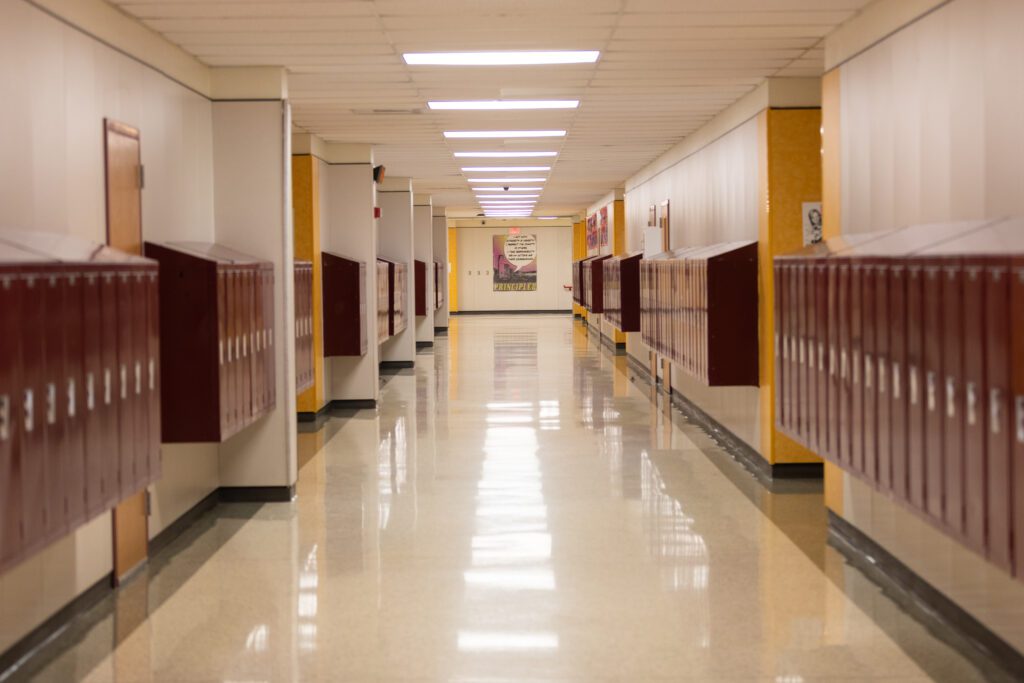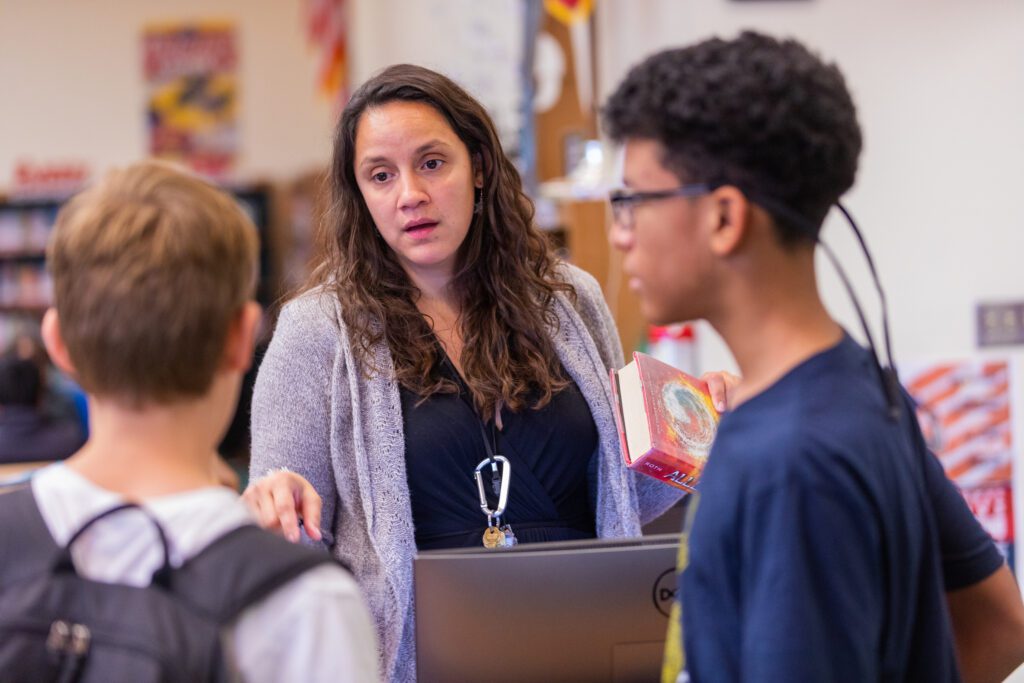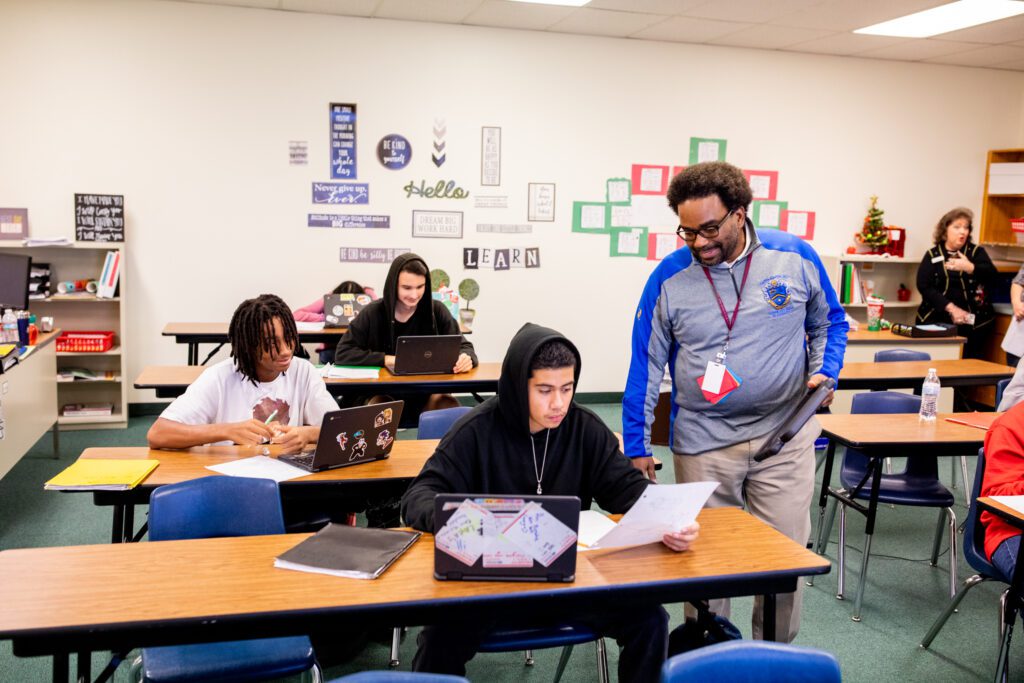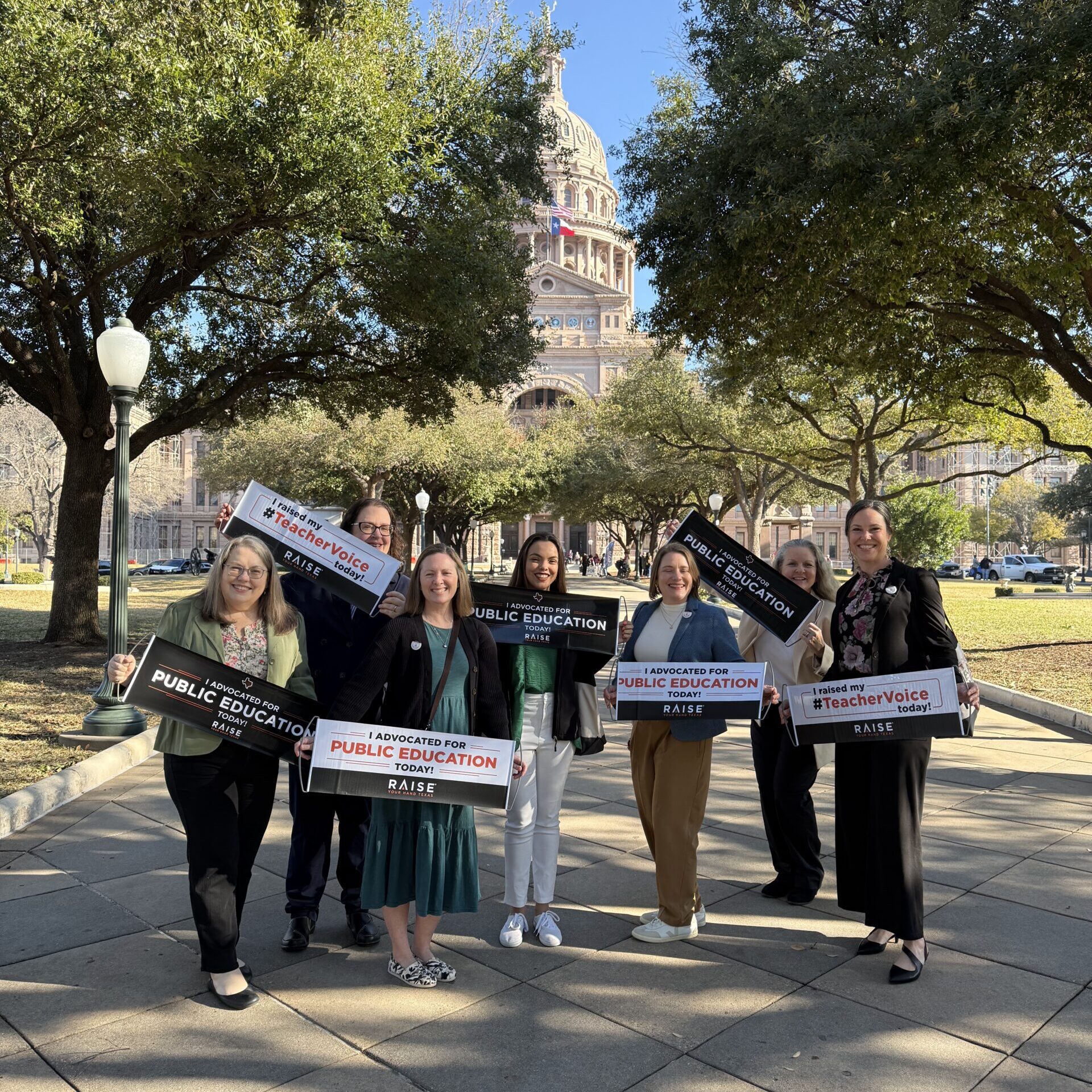
categories
Understanding Texas’ Reliance on Uncertified Teachers

February 14, 2025
When There’s No One Left to Hire
Standing behind a booth at a nearly empty job fair, an human resources (HR) director looks across a wide room that should be filled with teaching candidates, but all she sees is a trickle of people in mostly empty aisles. Months of meticulous planning have gone into this event – strategy sessions, travel logistics, staff scheduling, booth sponsorship costs, campus coordination – yet the return on investment is painfully low.
Nevertheless, there is no choice but to keep trying. “We can’t just leave positions unfilled,” a Texas school district’s HR director explains, her voice thick with resignation. “Our students deserve someone at the front of the classroom, even if they’re still working on their certification.”

This imperative is rippling through entire school communities. Support staff strains under rising overtime hours and morale diminishes as schools resort to inexperienced hires. Veteran teachers take on additional mentoring duties while managing their own classrooms. With fewer certified applicants each year, administrators face agonizing decisions – leave classrooms empty or bring on uncertified teachers?
The teacher shortage crisis isn’t just a staffing challenge. It is a collision of compounding factors that threatens the very foundation of public education across Texas.
Tracing the Roots of Texas’ Teacher Shortage
Stark statistics reflect how Texas’s teacher shortage crisis extends far beyond an isolated issue into an enduring challenge. Over the past decade, Texas has struggled to retain experienced educators and failed to produce enough new teachers to fill the widening gap.
According to the Texas Education Agency (TEA), teacher attrition rates in the 2023-24 school year rose to over 12%, while new teacher certifications plummeted 20% over the past decade, lagging significantly behind demand. Across Texas, rural districts continue to be disproportionately impacted – in the 2023-24 school year, 38,257 of 352,303 total teachers (10.9%) were uncertified, but some counties reported over 80% of new hires were uncertified in the previous year.
Political and economic factors deepen the crisis. The end of ESSER (Elementary and Secondary School Emergency Relief) in the 2023-24 school year adds to a lack of critical resources for schools already grappling with mounting inflationary pressures.

Meanwhile, the state’s failure to increase the basic allotment for public schools restricts districts from increasing teacher pay or investing in basic retention efforts. These fiscal constraints leave administrators in impossible situations, often pitting student needs against financial realities.
Echoing what many administrators continue to tell us, the HR director emphasized, “We’re running out of ways to stretch our budget. Without more funding, we can’t compete with other industries, let alone neighboring districts.”
Further, geographic disparities across Texas exacerbate the issue. Urban districts may compete for uncertified hires with limited classroom experience, but in many rural areas, even uncertified applicants are scarce. The HR director tells us that at times, the nearest certified applicant may live two hours away from a school looking to hire a much-needed teacher.
Ultimately, this challenge leads to students learning in overcrowded classrooms and teachers who are simply stretched too far. The cascading effects ripple throughout entire communities.
Exploring Uncertified Teachers in Classrooms

The term “uncertified teachers” encompasses a diverse group of people who step into classrooms amid Texas’ staffing crisis. These include long-term substitutes, paraprofessionals, career changers, out-of-state educators awaiting certification, and even parents of students.
According to data from a Texas Tech University study, students with new uncertified teachers lose approximately four months of learning in reading and three months in math, unless the teacher has prior experience in public schools – a concerning reality given that 72% of new uncertified teachers in Texas lack such experience, and nearly one in five do not hold a bachelor’s degree.
For many, the motivation to teach is deeply noble, driven by a desire to make a difference. However, the challenges faced by uncertified teachers are immense. As the HR director shared, “We’re grateful for their enthusiasm, but the reality is, most of them aren’t prepared for the complexities of managing a classroom. It’s a steep learning curve for everyone involved.”
This unavoidable reliance on uncertified teachers poses systemic challenges. While they may fill immediate vacancies, the long-term effects ripple through schools, impacting certified teachers, resource allocation, and ultimately, student learning outcomes.
Schools provide mentorship programs, professional development workshops, and classroom coaching to help uncertified teachers navigate the complexities of teaching. Despite carrying full workloads, veteran teachers absorb the impact of the growing presence of uncertified teachers, which inevitably leads to burnout.

As the HR director noted, “We do what we can to prepare them, but the lack of resources makes it feel like we’re patching holes in a sinking ship.”
Veteran teachers absorb the impact of the growing presence of uncertified teachers first. Though already carrying full workloads, they are often tasked with mentoring uncertified colleagues. This added responsibility, while critical for supporting new educators, leads to burnout.
Support staff is also burdened by this strain. Schools must reallocate resources to train and assist uncertified hires, stretching already desperately thin budgets. The HR director explained, “We do everything we can to set them up for success, but that means pulling people away from their primary roles, and it’s exhausting.” These systemic pressures impact the entire workforce, creating a cycle of turnover that’s inescapable.
For students, the implications are profound.
Research consistently shows that teacher preparedness directly correlates with student performance. However, with nearly 56% of new-to-the-profession hires uncertified and 10% of the overall teachers in the state lacking certification, many students are learning in environments that lack stability and consistency. This often leaves certified teachers juggling larger class sizes or splitting attention across multiple grades, further compromising educational quality.

The ripple effects of these challenges underscore how the teacher shortage crisis doesn’t just affect hiring; it reshapes the daily lives of everyone within the school ecosystem. The solution must go beyond recruitment; we need comprehensive reform that protects and supports our remaining educators before more leave the profession.
Addressing the Crisis: Support and Solutions

Amid the challenges of staffing schools with uncertified teachers, existing support systems offer a lifeline, but they’re not enough. Compounding the problem, many uncertified teachers report struggling to meet certification requirements due to high costs, limited access to preparatory programs, and the demands of full-time teaching.
Without targeted support, these teachers risk burnout or leaving the profession altogether. In districts where partnerships with universities have thrived, uncertified teachers transitioning to full certification have shown higher retention rates. Scaling these successes statewide could transform the system and offer stability for students and educators alike.
Additional policy solutions are also within reach. Targeted investments in mentorship programs, tuition assistance, and robust support systems for uncertified teachers can stabilize the workforce and ease the burden on certified colleagues. These measures offer a lifeline to schools navigating the immediate crisis, ensuring students still receive consistent instruction.
Acting Now to Save Texas Classrooms
To ensure Texas schools thrive, policymakers must also prioritize long-term strategies to create a well-supported, certified workforce. The image of an HR director standing at an empty job fair, searching for candidates who simply aren’t there, is not merely an anecdote – it’s a warning. Texas schools are fast approaching a reality where there is no one left to hire, and classrooms are left without qualified educators.
Reasonable compensation is a necessary ingredient for a stable workforce. And yet, 77% of teachers believe they are not making what they would consider to be a living wage. Due to inflation, the median Texas teacher’s salary decreased by $5,000 between 2020 and 2023.
Positive working conditions can also contribute to long-term teacher retention. Enabling teachers to focus on the work that inspired so many of them to join the profession – educating and inspiring students – attracts and retains talented educators, rather than burning them out with increasing demands.
However, it is difficult for school districts to invest in pay raises and positive working conditions when budgets are tight. After the state legislature failed to increase school funding in the 2023 legislative session, many school districts across Texas adopted deficit budgets. Additional state funding remains the simplest and clearest remedy to the teacher retention and recruitment crisis.
Administrators and educators, including uncertified teachers, continue to show extraordinary resilience, but the current trajectory is unsustainable. We are edging closer to a breaking point that could jeopardize the future of Texas public education. It’s time for the legislature to act decisively to ensure every child in Texas has access to the quality education they deserve.



